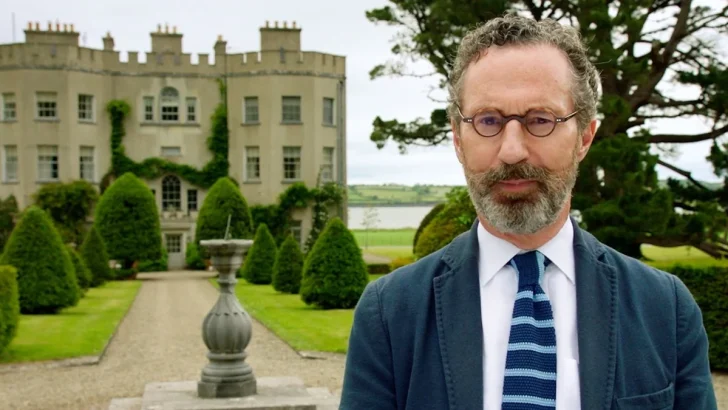Left without a handkerchief, by Robert O’Byrne (Lilliput Press, €18.00/£16.00)
The title of this erudite, elegant and elegiac book from ‘The Irish Aesthete’ blog writer Robert O’Byrne captures the essential “grand tragedy” that befell the Irish gentry in their “twilight”, to quote Mark Bence-Jones. Here O’Byrne takes advantage of a tight focus and a circumscribed range to shine the spotlight on a traumatic period – the Civil War – for this peoplehood marooned on the wrong side of the Irish revolution.
The War of Independence between 1919 and 1921 had seen many Big Houses burnt, seemingly because of the sympathies and backgrounds of their owners – usually unequivocal loyalists and with military connections.
The burnings in 1922 and 1923 were a little different. Many houses were destroyed because their owners had now swung behind the Treaty settlement and the hope of restoration of law and order under the Free State government.
That was symbolised by those of the southern loyalist community who accepted nomination to the Free State Senate. It might have been a symbol, but it had real-life consequences as these individuals and families put themselves in the firing-line.
The attacks were not so much a stroke for national freedom, as an attack on the persons and property of members of the second chamber of new national assembly, the Oireachtas.
O’Byrne is expert in putting flesh on stone bones, and his genius is to weave people and place into one coherent whole. He senses well the idea of how these houses were seen by their inhabitants, as little (and sometimes not-so-little) places apart, enclaves in an Ireland different to theirs – in Elizabeth Bowen’s words “Sometimes for days together a family may not happen to leave its own demesne”; or Joseph Hone’s “High on the hill behind two white gates, we were a world and a law unto ourselves”.
The Anglo-Irish may be inescapably tied to the landscape – but it is so often a relationship of murderous love. This book is about burnings; their back-stories and after-words.
The author takes ten ‘Big Houses’ – most of them in the south and west of the island – and tells the tale of their destruction by fire in the civil war period. As this reviewer has noted in a conference paper in 2019, fire held a particular terror for the owners of country houses. It was to the Big House as kryptonite to Superman.
Accidental burning was a constant threat – 76 Big House fires are recorded in Munster and Connacht, for instance, from the late 18th to the mid-20th centuries. Fire, by opening the house “to the Irish sky”, in J. G. Farrell’s formulation, enabled the landscape to reclaim what was its own, through the agency of those other fundamental elements of water, wind and earth.
The ritual of destruction often required the occupants to watch the funeral-pyre. In June 1921 Lord and Lady Bandon had to witness the burning of Castle Bernard; the feisty elderly countess defiantly sang God Save the King in her nightdress on the lawn as the Castle behind her burned. In Molly Keane’s novel Two days in Aragon, Sylvia Fox is unluckier: tied to a laurel tree she has to face the house as it is consumed by fire “…so that she might watch her own soul burning”.
This beautifully-written book with atmospheric photographs locates the destruction of these ten houses within the context of the families and individuals who constructed them, lived in them, and ultimately had to leave them.
The Irish gentry has always been good for a rattling yarn or two, or more, and O’Byrne takes full advantage of the colourful cast of characters that often seemed to be acting in their own domestic dramas to try and explain the whys and wherefores of the burnings. He has not only dug deep into public archives, but also has had valuable access to the private papers of many of the featured families.
One most valuable part of his structure is to examine the aftershocks – the quest, often bureaucratic, complex and fruitless, for compensation and redress, the attempts to rebuild, the enforced and often unhappy exile of those driven out and, most poignantly, the devastating effect of loss on those whose stewardship had accidentally coincided with war and conflict.
It is perhaps little comfort that the cultural vandalism as a result of destruction – Ardfert Abbey in Kerry is a particularly egregious example described by O’Byrne – might be seen as a sort of comeuppance for a class responsible for so many house destructions during the evictions of earlier centuries.


 Pic. Robert O’Byrne at work.
Pic. Robert O’Byrne at work. 